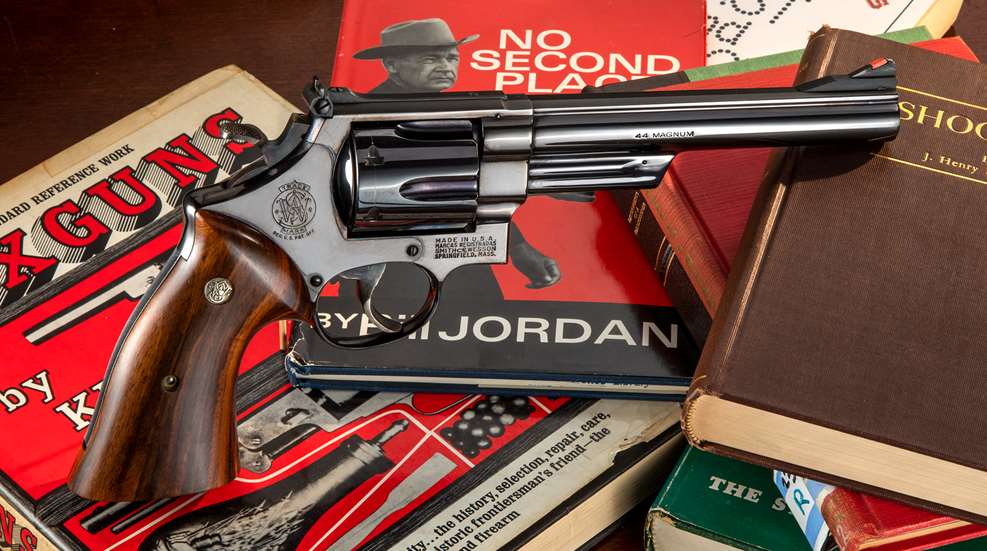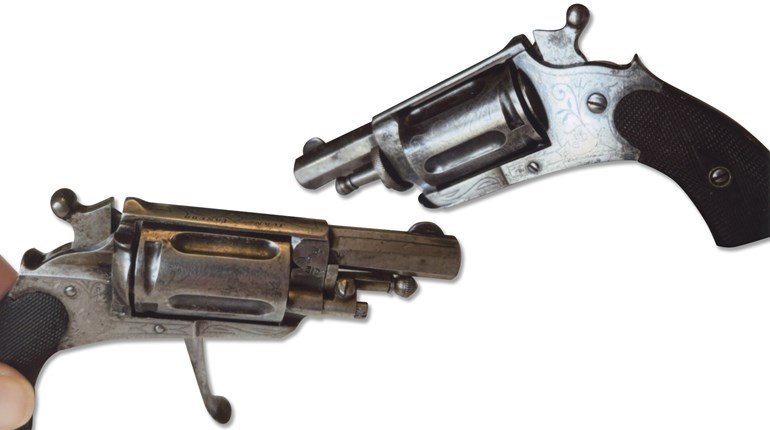
Many esteemed, old-time gunwriters documented the merits of the double-action revolver in great detail. Though their names may not garner the same recognition they once did, much of the wisdom and defensive expertise they imparted remains relevant in today’s world.
I find it interesting to watch the resurgence of the double-action (DA) revolver as a defensive tool. Of course, many of our older shooters never gave it up in the first place. But, many of those who are new to personal defense are finding the DA revolver to be just what they need. Please don’t get excited, this is not another “revolver versus semi-automatic” piece; both have their strong pros and cons.
As with any other defensive firearm, the new shooter needs to learn safe, effective methods of gun handling. In this day and time, that often means spending time on the internet. Unfortunately, most of the really good stuff on revolvers predates that modern source of information. Some of the best information about running the DA revolver is found in books, most of which are still in print. In no particular order, here are just a few that will get the new revolver shooter started in the right direction.
“Sixguns” by Elmer Keith is one of the classic gun books of all time. Keith had a hand in developing the .41 and .44 Mag. rounds. He designed bullets, revolver stocks and holsters. In this seminal book, he offers insight into pistol presentation, sight alignment and fast double-action shooting. There are lots of interesting, entertaining stories in this book, too.
“Fast And Fancy Revolver Shooting” by Ed McGivern is a book that still amazes me because Mr. McGivern could just do amazing things with a revolver. Fast shooting, accurate shooting and exhibition shooting were all part of his program. More importantly, McGivern explains how to do it. If you’re like me, you won’t be able to duplicate most of it, but one can spend a lifetime trying.
“Shooting” by J.H. FitzGerald contains many good defensive techniques for the revolver shooter. Best known for designing the Fitz Special, FitzGerald, in the process, also designed the modern Colt snubnose revolver. He talks about why the snubnose revolver is such a good choice for the defensive shooter and offers a lot of good training tips.
“Experiments of a Handgunner” by Walter Roper is an important addition to any revolver shooter’s library. Among other things, Roper designed some of the best revolver stocks for defensive shooting. His development led to the design of what we now call the Smith & Wesson target stocks. And, a similar design is simply called Roper stocks. I’ve got a set of Ropers on my 4-inch Smith & Wesson Model 19, and they are great for fast double-action work.
“No Second Place Winner” by Bill Jordan is the all-time classic DA revolver book. Jordan talks about stocks, holsters, ammo and defensive-revolver techniques, and he does so in a most entertaining style. I was present at several of Jordan’s shooting exhibitions and have spent a lifetime trying to duplicate some of the things he did—with very little success, I might add.
While these books, and others, will get the new shooter started down the road to understanding and managing the double-action revolver, it is important to learn to safely and efficiently handle the revolver in a defensive situation. Managing the double-action trigger and learning to quickly and effectively reload are two of those important skills.
To successfully hit a target using the long DA trigger pull takes a good bit of practice. It helps to have a gunsmith polish all of the internal parts. I also find that it helps to use a smooth, narrow trigger and stocks that fit the individual shooter. Perfecting the DA trigger pull is also the place where dry practice really pays dividends—just make triply sure that the gun is, in fact, unloaded and that no live ammunition is present in the room. With practice, you’ll be able to break your shot as soon as the sights come on target and do so without the front sight moving off the mark.
The defensive-revolver shooter is well advised to carry at least one speed loader for loading when all the cartridges in the gun have been fired, and one strip loader for reloading when only a few cartridges are spent. A belt pouch instead of a strip loader may also be a good idea. There are several techniques for quickly reloading the revolver, and the shooter should do lots of practice with the method that he or she prefers.
As with any type of firearm used for defense, it is always a good idea to get professional training. The shooter will not only learn safe gun handling, but he or she will also be on the short track for efficient and effective marksmanship. Fortunately, good revolver training can be scheduled or arranged at Gunsite, Thunder Ranch or the Shootrite Academy. Grant Cunningham, a traveling clinician, is another great source for training. There are doubtless other qualified schools and instructors, but I can personally vouch for the credibility of those listed.
The double-action revolver is still around after all these years because it is an effective defensive tool. New shooters who are interested in the DA revolver for defensive purposes are well advised to study the masters and train with the experts.


































